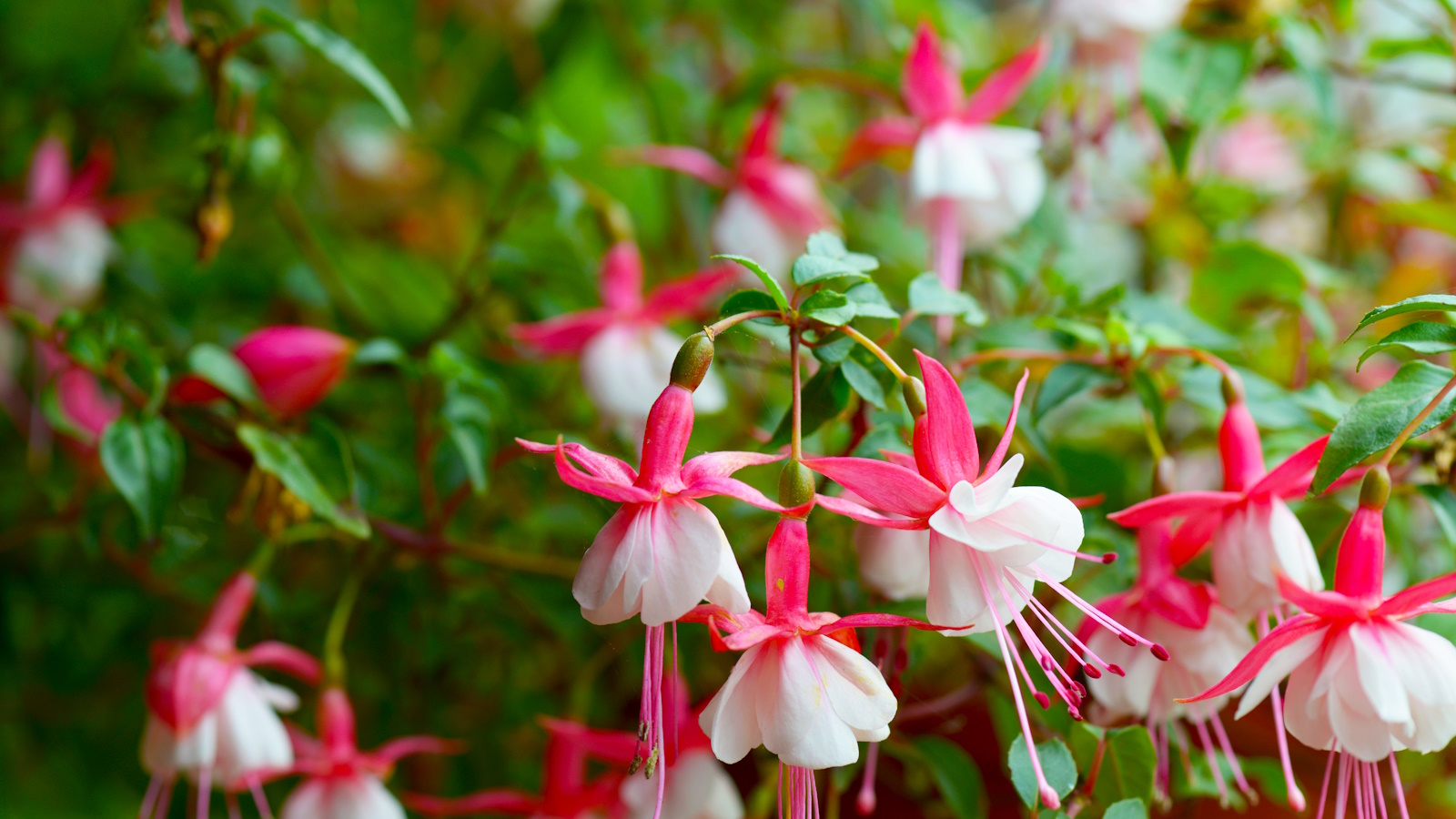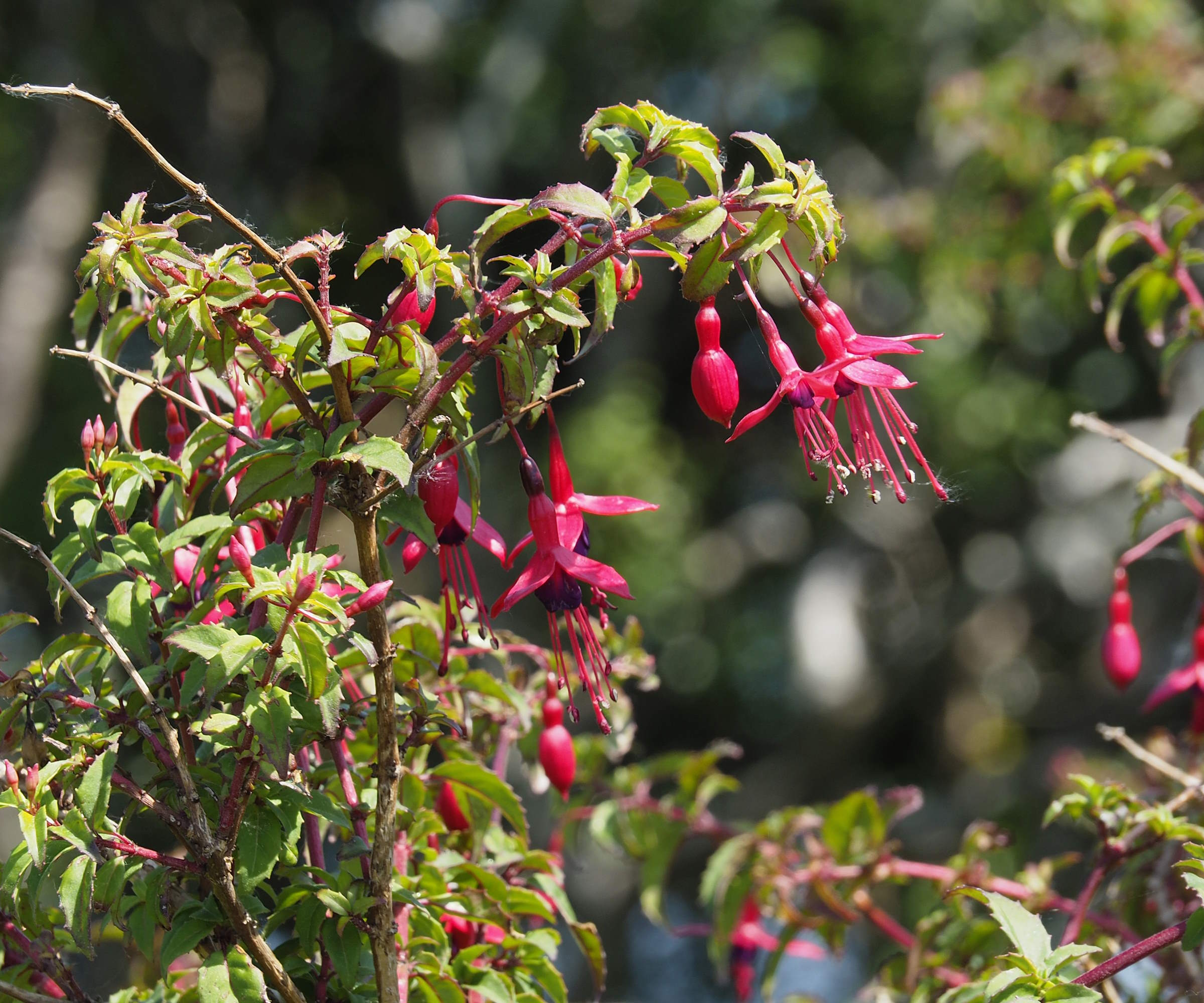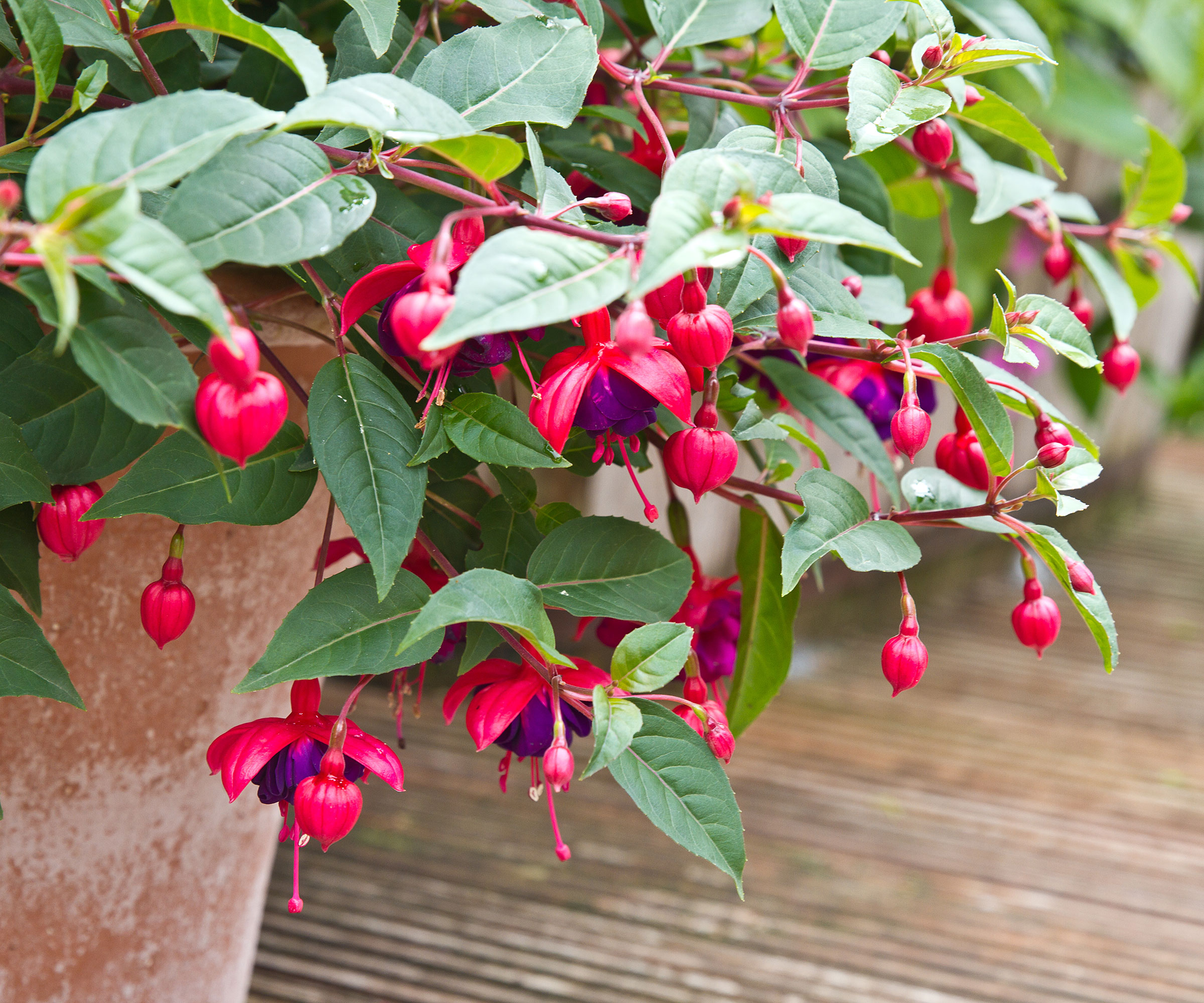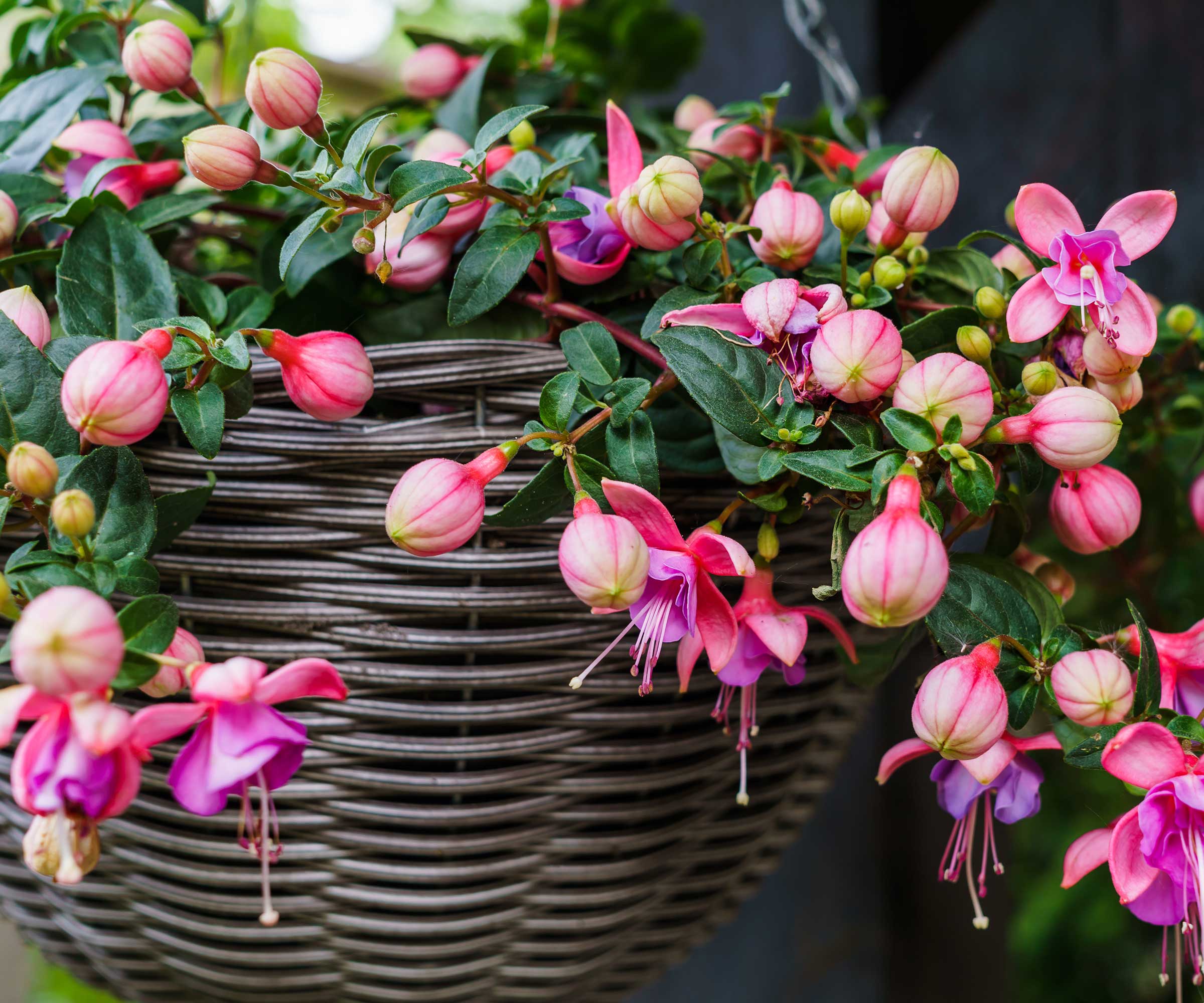
Learning how to grow fuchsias in pots is a great way to add vibrant and long-lasting color to your containers. With their bold, trumpet-like blooms, fuchsias will reliably flower from spring until fall, adding structure and impact wherever they are planted.
Growing fuchsias in pots is an ideal solution if you are gardening in a small space, such as on a balcony or patio. As a gardener, I find growing in pots a great way to add variety to any outside space, and by changing textures and colors each year you can maintain interest and keep your yard looking and feeling fresh.
There are many different varieties of fuchsia, found in a range of colors, so there is sure to be a type of fuchsia that works for you. This year, I have enjoyed the all-white 'Hawkshead' variety, which can be paired with any plant and looks particularly elegant in a pot. So, if you are looking for container gardening ideas this year, fuchsias should be a consideration.

How to grow fuchsias in pots
When considering how to care for fuchsias, it is important to remember there are two categories: tender and hardy. Both of these can be grown in pots, but tender varieties must be protected during the winter or will be lost during cold snaps. Hardy options are typically varieties of Fuchsia magellanica, a species native to the southern tip of South America where the climate is a constant challenge. Unsurprisingly, hardy varieties can easily tolerate wind, rain and snow, and so are popular plants in cooler US hardiness zones across the Northern Hemisphere.
Growing advice for fuchsias in pots

Fuchsias are some of the best container plants for pollinators, known to attract bees, butterflies and hummingbirds. With colorful, nectar-rich blooms, adding one or two fuchsias plants to your pots is a good idea if you are seeking wildlife garden ideas.
'Fuchsias do very well when planted in containers,' says plant expert, Katie Sunderlage. 'Whether you grow tender or hardy varieties, fuchsias are a great option, filling any space with colorful blooms.
'I love the trailing or cascading fuchsia varieties for growing in pots,' Katie adds. 'They look so elegant with their foliage and blooms hanging down and covering the base of the container.' One trailing variety with bold colors is 'Blue Eyes', available to order via Amazon. With clashing pink and purple flowers, 'Blue Eyes' is ideal if you enjoy a maximalist aesthetic.
'Choose a pot that can accommodate the size of your fuchsia after a season of growth,' Katie says. 'Generally, it is recommended to use a 12-inch pot for each plant if you are only growing one plant in one pot.' When growing multiple plants per pot, be sure to use a larger container to give your plants more room to grow.
'Make sure there are drainage holes and choose potting soil that is good quality,' Katie adds. 'Soil should be kept moist but not saturated or waterlogged, as your plants will not like this.' Organic potting soil is available to buy from Walmart.
'It is important to monitor the soil during the warmer months of the year, never allowing the soil to dry out completely.' As Katie says, watering your pots is a crucial job as part of your summer gardening checklist.
While most fuchsia species can be grown in darker spots, for example, they are ideal plants for a shaded balcony, providing 'some morning or late evening sun will produce the best results,' Katie says. 'Just be sure to protect your plants from the hot afternoon sun, especially in warm climates,' such as US hardiness zone 9 and above.
It is a good idea to remember to fertilize fuchsia plants during the growing season, particularly when grown in a pot. This is best done during the spring and summer, feeding with a bloom booster fertilizer, available from Amazon, that will encourage flower production late into the season.
This feed promotes flower production, helping to encourage your plants to continue blooming late into the season.
Recommended fuchsia varieties for pots

'One of my favorite varieties is 'Eruption' which is a beautiful trailing option,' Katie says. 'In summer, it is absolutely full of beautiful, pink, pendulous blooms. They work perfectly in a hanging basket or pot and really make a colorful statement in a shady location. What's more, they will bloom all summer and even into fall in most climates.' Many different trailing fuchsia plants are available to order via Amazon.
'I am also a fan of the 'Wicked Queen' variety for many reasons,' Katie continues. 'This fuchsia is one of the most hardy options on the market, and has an attractive semi-upright habit, with stunning pink blooms, adding vibrant height and structure to pots and displays.'
With vibrant pink and purple blooms, 'Blue Eyes' is sure to turn heads in your garden. These live plants will quickly grow and fill your pots.
FAQs
Should I move my fuchsia pots indoors during the winter months?
This will depend on the fuchsia variety you grow. 'Many tender species are not tolerant of cold climates,' says plant expert, Katie Sunderlage, 'so it’s best to bring them indoors or provide protection when the temperatures drop. One option is to place the fuchsia pot in a garden shed or greenhouse, where it will be protected from wind, snow and frost.' You can then bring the pot back outdoors in spring.
If you are looking to increase your fuchsia collection this year, one free and fun option is to propagate your plants. Fortunately, fuchsias are some of the easiest plants to take cuttings from, and learning how to take fuchsia cuttings is a simple process that can be done during late summer with a high chance of success. Our guide has all the information you need and will ensure that your pots are full of colorful fuchsia blooms next year.







